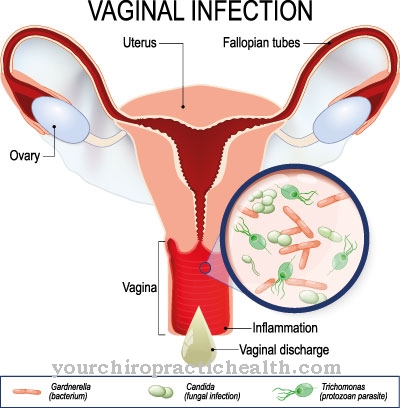Monkey pox are, as the name suggests, a zoonotic disease that occurs primarily in monkeys. But it can also be transferred to humans
What is monkey pox?

Monkey pox is an infectious disease that is transmitted by a virus called Orthopoxvirus simiae, or Monkey Pox. This pathogen is particularly common in Africa. The main distribution area is in West Africa and Central Africa.
Tree rodents such as various types of squirrels and rats are particularly infected there. It is through these animals that the virus is transmitted to the monkeys living in these areas, especially the Javanese monkeys and rhesus monkeys. 14 years ago, monkey pox also appeared occasionally in American prairie dogs. They are said to have been transferred to a US zoo by a large rat from Ghana.
Monkeypox outbreaks have occasionally occurred in recent years in Sierra Leone, Ivory Coast, Liberia, Nigeria, Cameroon, Gabon, and the Republic of the Congo. Fortunately, the number of new cases is relatively low. The annual incidence is only 0.6 per 10,000 people.
causes
Since monkey meat is often on the human menu in Africa, the disease is also transmitted to humans in this way and triggers a smallpox disease in them that is very similar to human pox (triggered by the Orthopoxvirus Variola virus).
Infection is also possible through the secretion and blood of sick animals, for example through bites and scratches, but the risk of infection is rather low this way. Contagion with monkey pox from person to person is extremely rare.
Symptoms, ailments & signs
After an incubation period of about two weeks on average, the monkey pox breaks out. They first manifest themselves as a high fever, chills, and swollen lymph nodes. Sore throats, headaches, joint pain, muscle aches and coughs also occur.
Later, the infected develop a rash of redness, pimples and blisters. A pox-like large-scale rash forms on the affected skin areas, especially on the face, but also on the neck and groin. The bark dry out over the course of around two weeks.
When they eventually fall off, they often leave behind the typical indentations or pockmarks that are typical of human smallpox. The disease has nothing to do with so-called chickenpox. These are caused by the varicella zoster virus, which is not a smallpox virus. In the early stages of the disease, monkey pox is often confused with measles, scarlet fever, herpes zoster, mumps or cowpox.
Diagnosis & course
To diagnose monkey pox, the virus is detected by examining the smallpox scab, the smallpox secretion or swabs in the throat.
With a cell culture, the detection of the disease takes a few days, with other special methods only a few hours. Diagnosis is generally carried out in special laboratories. The occurrence of lymph node swellings on the lower jaw, in the neck and groin region is also very typical for monkey pox.
Monkey pox is a reportable disease in many countries. The course of the disease in this form of smallpox is very similar to that of human smallpox, although it is often somewhat milder. A previously healthy person with an intact immune system rarely dies from the disease today.
On the other hand, the risk is greater for debilitated old people or poorly nourished people and for young children. The mortality rate for monkey pox is between one and a maximum of ten percent of infected people, depending on the region of the outbreak. This makes it lower than the death rate for human smallpox.
Complications
Various complications arise as a result of monkeypox infection. Initially, the infection leads to a fever, chills, headache, and cough. After a few days, painful lumps often develop, which later develop into pustules and leave scars. In addition, other skin changes such as a generalized rash can occur.
Existing skin diseases are aggravated by monkey pox, which can sometimes lead to unbearable pain and itching. Myalgias and arthralgias, i.e. diffuse muscle and joint pain, which only slowly subside after recovery, rarely develop as a result of the infection. If there is no vaccination, monkey pox can also cause laryngitis, tonsillitis, and conjunctivitis.
Often there is also swelling of the lymph nodes, which is rarely associated with hormonal disorders. If the monkey pox is not treated in time, this initially leads to organ failure and circulatory collapse, and ultimately to death. Children and elderly or debilitated people as well as cardiovascular patients and people with an existing smallpox vaccination are particularly at risk. The mortality rate for monkey pox is between one and ten percent, depending on the region of the outbreak and the time between infection and therapy.
When should you go to the doctor?
Monkey pox is a zoonotic viral disease which, after an incubation period of around two weeks, can not only lead to high fever and chills. Rather, throat, head, joint and muscle pain as well as cough and swollen lymph nodes (especially on the lower jaw) are among the symptoms that must first be discussed with an internist. This will probably refer to a virologist for additional or further treatment.
If there is a rash consisting of blisters, pimples and redness that spreads to a widespread skin rash, especially on the face, neck and groin, in most cases the treatment is accompanied or continued by a dermatologist.
If the course is only characterized by a slight fever and cough and a rash that does not spread, a visit to a doctor is often not necessary. However, the infected person should observe himself very closely and consult the doctor directly if it deteriorates. If the harmless form of monkey pox remains and the bark falls off by itself after drying, the worst is over. This final stage takes about two weeks.
People who are physically weak or who suffer from deficiency symptoms (malnutrition) should not forego a medical diagnosis and treatment. The same is true when children are infected.
Doctors & therapists in your area
Treatment & Therapy
Treatment of monkey pox is generally limited to treating symptoms and preventing secondary infections. In addition to strict bed rest, antipyretic drugs are generally prescribed, as well as headache medication and medication for strep throat, joint and muscle pain.
In the case of a so-called superinfection, the patients usually also receive special antibiotics. If the disease is over, there is lifelong protection against re-infection with the monkey pox virus but also with the human pox virus. Cross immunity with the variola virus is given.
Outlook & forecast
Monkey pox causes various symptoms that are similar to febrile illness. Monkey pox is very dangerous for humans and must therefore be treated immediately in any case. First and foremost, there is a severe fever and furthermore chills and fatigue. The person concerned feels tired and sick and the resilience drops enormously. There is also pain in the muscles and joints and the lymph nodes swell up. A reddish rash forms on the skin, which is often covered with blisters and pimples.
The diagnosis of monkey pox is not always easy for a medical professional, as the symptoms cannot always be clearly assigned to a disease. For this reason, monkey pox cannot always be treated early.
Without treatment, inflammation occurs in various regions of the body and thus also organ failure. The patient eventually dies. The treatment of monkey pox is not associated with any special compilations. The administration of antibiotics alleviates the symptoms and the disease can be completely fought.
prevention
Since monkey pox is transmitted relatively frequently via the monkey intermediate host, people should approach wild monkeys as well as captive monkeys with the necessary caution and only approach the animals in a protected manner in order to avoid bites or scratches. The same also applies to the first carriers of the virus.
The African tree squirrels, for example, are very cute, but can still scratch and bite and thus spread the virus. It is also very important to educate the Africans living in the African jungle that the consumption of rodent meat and monkey meat carries the risk of developing monkey pox.
There is an import ban across the EU for non-domesticated rodents and squirrels from tropical Africa and for prairie dogs from the USA. Another means of preventing monkey pox is preventive vaccination against human smallpox (variola).
After a certain amount of vaccination fatigue over the past few decades and fewer people were vaccinated against smallpox, the number of monkey pox outbreaks increased again overall. Researchers also fear that the monkey pox virus could change genetically, making it easier for human-to-human transmission to occur in the future.
Aftercare
As a rule, direct follow-up care is not possible for monkey pox. The disease must be treated by a doctor as soon as possible in order to avoid further complications. In the worst case, if left untreated, monkey pox can lead to the death of the person affected or significantly reduce the life expectancy of the patient.
In most cases, the disease is treated with medication. The person concerned must pay attention to the regular intake and possible interactions with other drugs in order to avoid complications. Especially with children, parents have to force their children to take the medication so that the disease can be cured.
Antibiotics can also be taken. Alcohol should be avoided when taking antibiotics, as alcohol would reduce the effectiveness of the antibiotics. The patient generally needs to rest and take care of his body.
In doing so, strenuous activities or sporting activities should be avoided as far as possible. In the event of inflammation, a doctor must be consulted immediately. As a rule, early diagnosis and treatment lead to a positive course of the disease and not to special complications. Contact with the triggering animals should be interrupted in the case of monkey pox.
You can do that yourself
Individuals diagnosed with monkey pox require immediate medical attention. In addition to the medical therapy, which consists of the administration of various drugs and regular check-ups by the doctor, the patient must take care of himself. The doctor will order strict bed rest and also recommend a change in diet. Especially in the acute phase of the illness, the diet should consist of gentle foods such as rusks or chicken broth. The patient must also drink a lot and avoid stimulants such as coffee or alcohol.
If a superinfection has already occurred, hospital treatment is required. Depending on how the disease progresses, the patient needs several days to weeks of bed rest after the hospital stay. It must also be ensured that the disease has been completely cured. This is achieved on the one hand through medical examinations and on the other hand through good observation. Patients who notice unusual symptoms or complaints should speak to the responsible health professional immediately. In the event of serious complications, it is best to call an emergency doctor.the person concerned must be taken to hospital immediately.
Other self-help measures focus on identifying the trigger for the monkey pox and taking preventative measures.
















.jpg)
.jpg)



.jpg)






